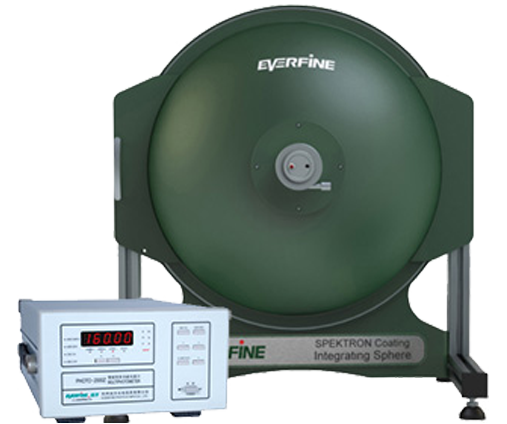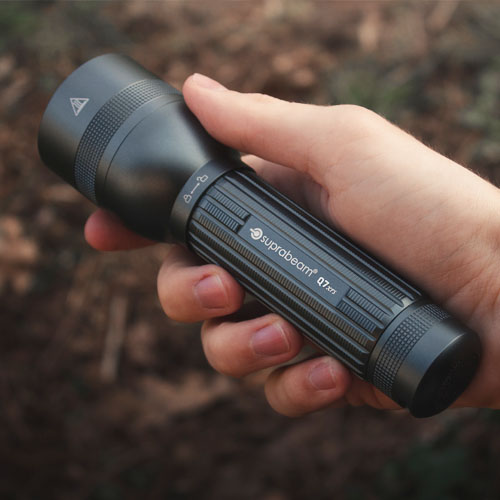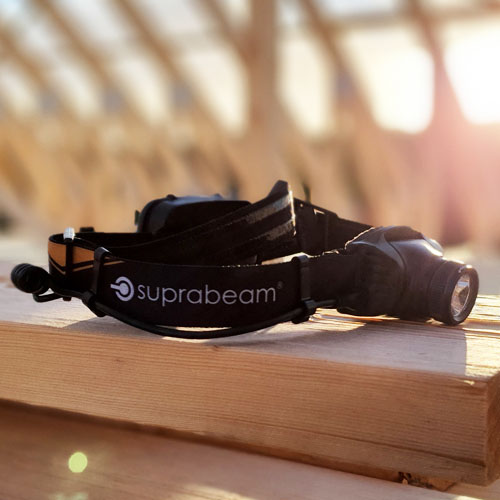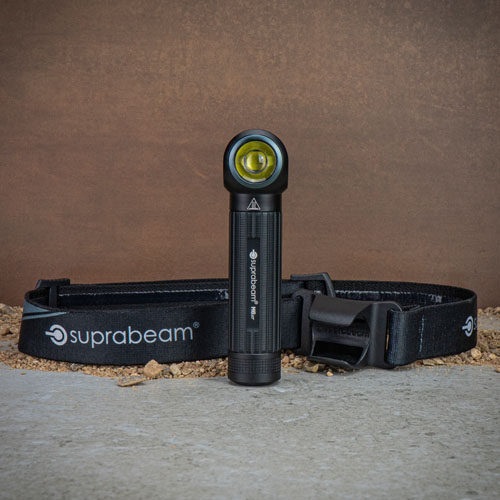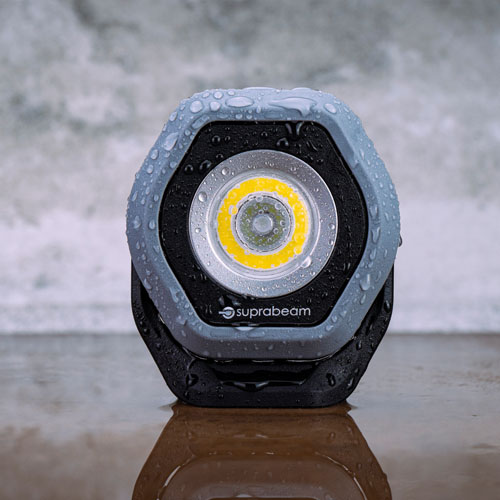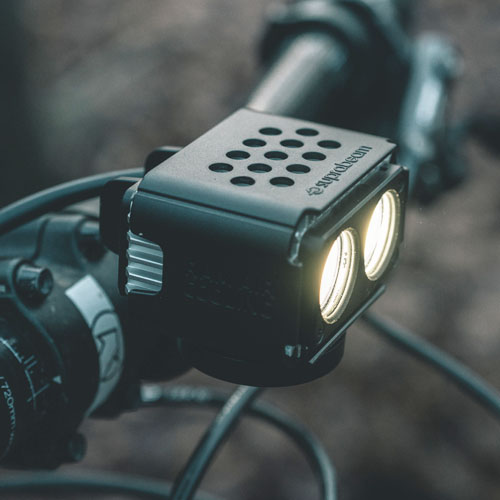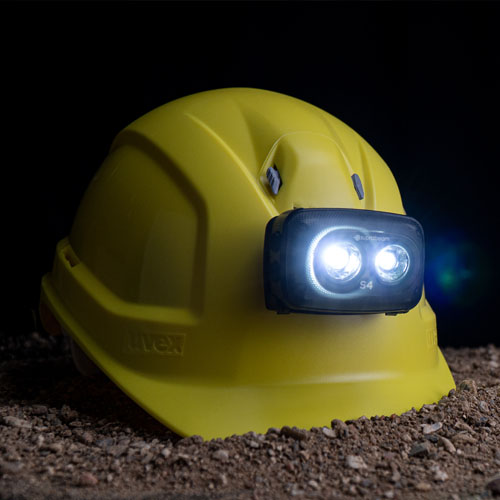Why a lightcurve is the most important tool when judging flashlight and headlamp performance
What should you look for when shopping for flashlights and headlamps? The manufacturers usually highlight two main specifications; lumens and runtime, but we would argue for the lightcurve.
Before we begin, we must explain three things; what is the ANSI/NEMA FL-1 standard? And what are lumens and runtime?
ANSI/NEMA FL-1
The ANSI/NEMA FL-1 standard is a standardisation of flashlight/headlamp performance. The standard is developed by National Electrical Manufacturers Association and approved by American National Standards Institute.
ANSI/NEMA FL-1 describes a list of different specifications and how the manufacturers must measure them, but we are focussing only on lumens and runtime.
This standard is used by almost all major flashlight/headlamp manufacturers and is the only standard/legislation in the flashlight/headlamp industry.
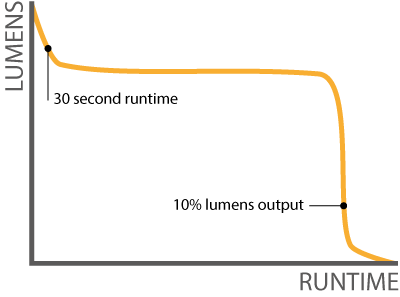
Lumens
Lumens is a measurement unit describing the total amount of light emitted from the flashlight/headlamp. You can roughly say that the more lumens, the brighter the light. If the manufacturers follows the ANSI/NEMA FL-1 standard, they can advertise the flashlight/headlamp with the lumens output measured after 30 seconds.
Runtime
The runtime is basically the time from the flashlight/headlamp is turned on and until there is no more power left.
Again, if the manufacturer follows the ANSI/NEMA FL-1 standard, the runtime is measured from when the flashlight/headlamp is turned on and until the lumens output goes down to 10% of the 30 second value. (Example: If the 30 second lumens value is 600, the 10% value is 60 lumens)
” So, if all manufacturers follow the ANSI/NEMA FL-1 standard you can easily navigate between the different flashlights/headlamps and find the best one just by looking at the specifications, right? “
Not at all! And this is where it gets tricky!
Because, you know how many lumens the flashlight/headlamp emits after 30 seconds and for how long the flashlight/headlamp can run until the lumens output goes below 10%. But these values do not give you any idea about how the light behaves between these two endpoints.
Ideally the flashlight/headlamp would stay at the advertised lumens output during the advertised runtime, but this is rarely the case. The only way for you to know how the light behaves, is if the manufacturer publishes the LIGHTCURVE.
What is a lightcurve, and why is it important?
A lightcurve is a curve in a graph that has time on the X-axis and lumens on the Y-axis. By studying the curve, you can see how the brightness of the flashlight/headlamp drops over time. In the video below you can see an example of how two headlamps that are marketed very differently behave when measuring their lumens output in our laboratory.
We have filmed the headlamps in our light tunnel so you can SEE what the actions on the lightcurve actually mean in real-life use. The headlamps in the video is a previous version Suprabeam V3pro rechargeable with 400 lumens, and it is compared with a headlamp from one of the leading brands in the industry.
What the video and the lightcurve prove, are that even though a flashlight/headlamp lives up to the ANSI FL-1 standard, it might not behave just the way the advertisement made you believe.
In the light laboratory we test a lot of headlamps and flashlights from different manufacturers. This way of distributing the light is unfortunately something we see a lot. It happens because the manufacturers programme the flashlight/headlamp to have a very high lumens output for a couple of minutes and then drop the output drastically to ensure a very long runtime.
As a result, they can advertise a very high lumens output and a very long runtime which may be true according to ANSI/NEMA FL-1, but it does not give the consumer an accurate impression of how the flashlight/headlamp actually performs.

Why is this a problem?
The problem is how the specifications are presented, not the flashlights/headlamps themselves.
If you only use your flashlight/headlamp for five minutes at a time, you might love the ultra-bright couple of minutes when you turn it on. And you might even have turned it off before the big drop in light output. But if you need a high and steady light output for hours of work, exercise, etc. it just won’t work to have 850 lumens for 30 seconds and then a big drop to 180 lumens for the rest of the runtime, like the headlamp from another brand shows on the video.
Therefore, lightcurves are inevitable if you want to make an informed decision when choosing a flashlight/headlamp. The specifications covered by the ANSI/NEMA FL-1 standard cannot tell you how the flashlight/headlamp really performs.
We believe that you should be able to make an informed decision, so you end up with the best flashlight/headlamp for you. Therefore, we show lightcurves for ALL our products on our website, and on the packaging.
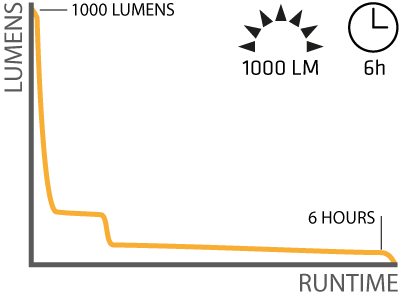
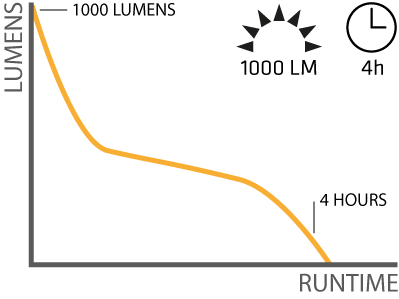
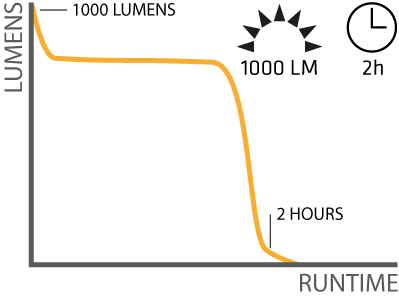
Even though the lightcurve examples above are very different, all three starts at 1000 lumens and all three lightcurves are ANSI/NEMA FL-1 approved. Anyone who sees these three products in a store only presented with the specifications would think that the first one is the best one, since it has 1000 lumens and runs for 6 hours right?
What can you do as a consumer?
There are many great flashlights/headlamps on the market, but no way of knowing how to choose the right one. The ONLY way you can make an informed decision, is if the manufacturer has published the lightcurve for the product.
If not, we would advise that you contact the manufacturer and ask to see the lightcurve.
Why does lightcurves dim down?
When studying lightcurves you would notice that almost ALL flashlights/headlamps dim down from their 30 second lumens output. Some more and some less, but why is this?
It is mainly down to one factor: heat build-up.
When running an LED there will always be heat build-up, but too much heat will harm and damage the LED chip. When running the LED hard to create a high lumens output, the heat build-up will be equally high, and the flashlight/headlamp will have to dim down in order to protect the LED.
However, there are different ways of making the headlamp dim down. We do, unfortunately, see a lot of examples where the behaviour of the light is designed to generate impressive lumens and runtime values, rather than a useful light output.
At Suprabeam we aim to give the user maximum light control, which means that our lights run on the highest possible continuous light level. Typically, you will see some kind of dimming down when the LED gets to hot, but only down to the highest possible light level that the light can hold for the rest of the runtime. Like you see in lightcurve example 3 above. If a longer runtime is needed, the flashlight/headlamp has a lower light level that can be activated.
The key focus point is that the USER decides how the light behaves (high light output / long runtime) and not the software in the flashlight/headlamp.
How do we test?
When we test our own products and competitive products, we use a highly specialised light sphere. This way we can measure the lumens output and runtime. We make every test and graph with the same setup:
- Turn on the torch/headlamp
- Close the light sphere
- We test until there is no more power left in the battery. Or until it is down to 10% lumens output.
Read more about lightcurves and testing here
You can see the lightcurves from all our products, and compare them as you want, by clicking the buttons below
